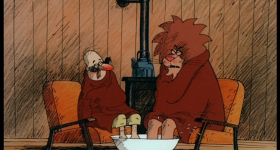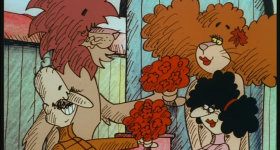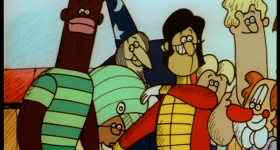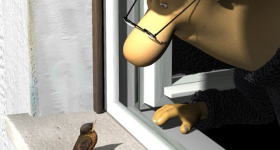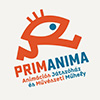They say that an auteur filmmaker can be recognised from a few minutes—or in the case of animation artists, a few seconds—of their work. This statement seems to describe Pál Tóth exactly. Across his oeuvre, he created a universe like none other, maturing the auteur form of 3D computer animation. Pál Tóth, also known as Paja, started his career at the Kecskemét Studio of Pannonia Film Studio in the 1970s and 1980s. He entered the world of animation as one of the young creators who laid the foundations of animation filmmaking in Kecskemét. His first individual film How to Scare a Lion (1980) achieved great international success with its visuals resembling circus posters. This film introduced the title characters of Leo and Fred (1984–86), a jewel of Hungarian animation series. The story of the lion and the lion tamer reveals more melancholy than cheer, containing more quiet reflection than movement and activity. The final episode titled Concert is one of the most heart-wrenching works in Hungarian film history.
After working in Belgium for almost a decade, the animation artist returned home and settled down in Szeged, where he created his 3D shorts under his own enterprise, Paja Film, a total of nine films from End of the Season (1996) to his most recent work, Rainfall (2012). The affinity for spending time with (seemingly) idle contemplation and self-reflection present in Leo and Fred is taken even further in these pieces. The fisherman in End of the Season makes the (artificial) world disappear around him; in the ambiguous grotesque piece Another Day (1998), clothing and man switch places. Cartoon (2005) reveals the workings of the author’s own creative imagination; Night Fishing (2007) is centered on the experience of observing nature, while Blackbirdie (2009) tells the story of a fleeting friendship. Winter (2001) ponders transience through the fate of a snowman longing for spring, and in Rainfall the outside world threatens to turn an old lady’s life upside down in the form of a mysterious mass. Paja films are portraits of loneliness, with all its beauty and sadness. And this makes The Sexual Life of Fireflies (2000), focusing on the group activities of insects, a sparkling exception: its ambiguous and rather obvious bullets of humour, along with its dazzling light effects, really make this animation go off with a bang. It is not an accident that the computer generated animations of Pál Tóth are known across the globe, and have won numerous festival prizes.
Zoltán Varga
film historian

